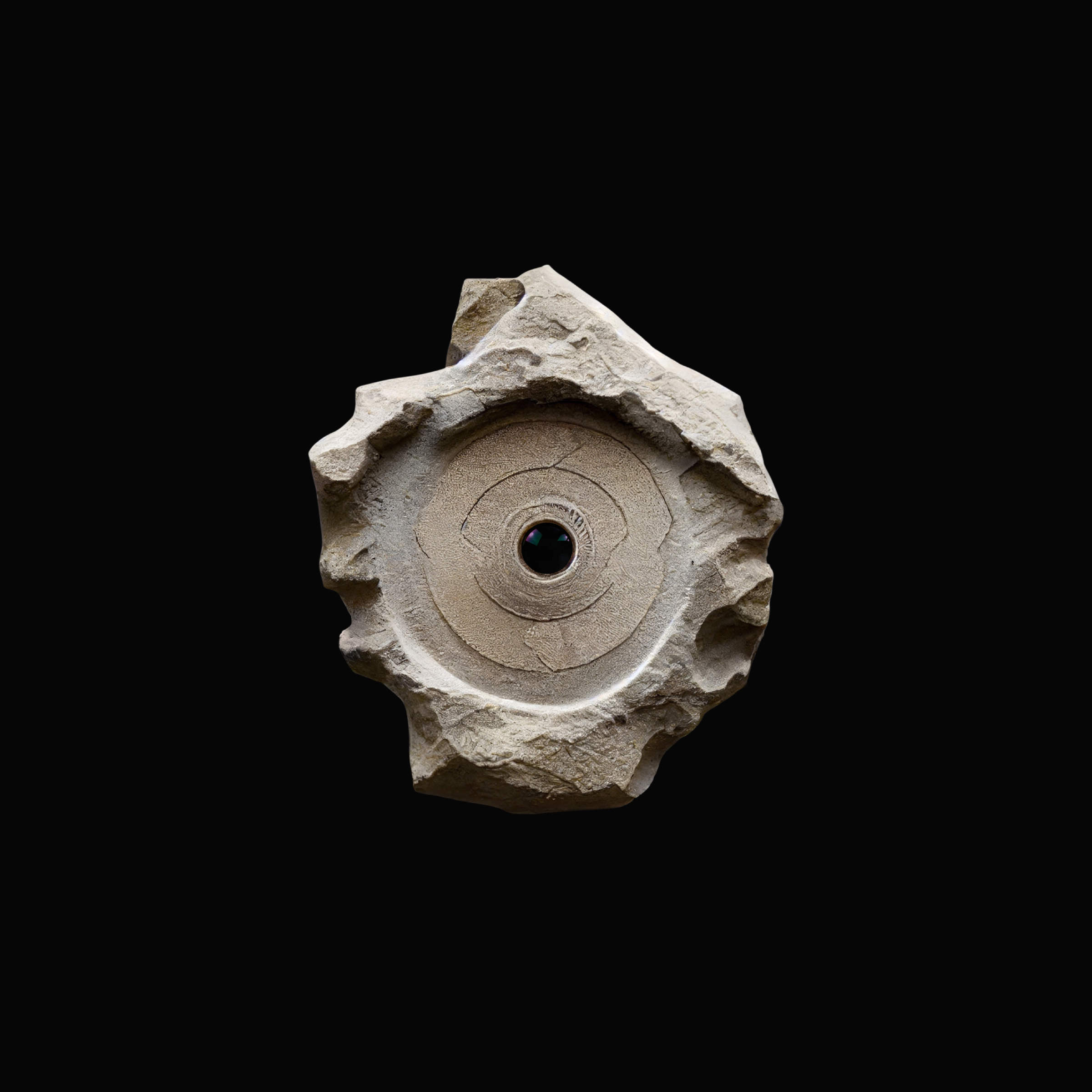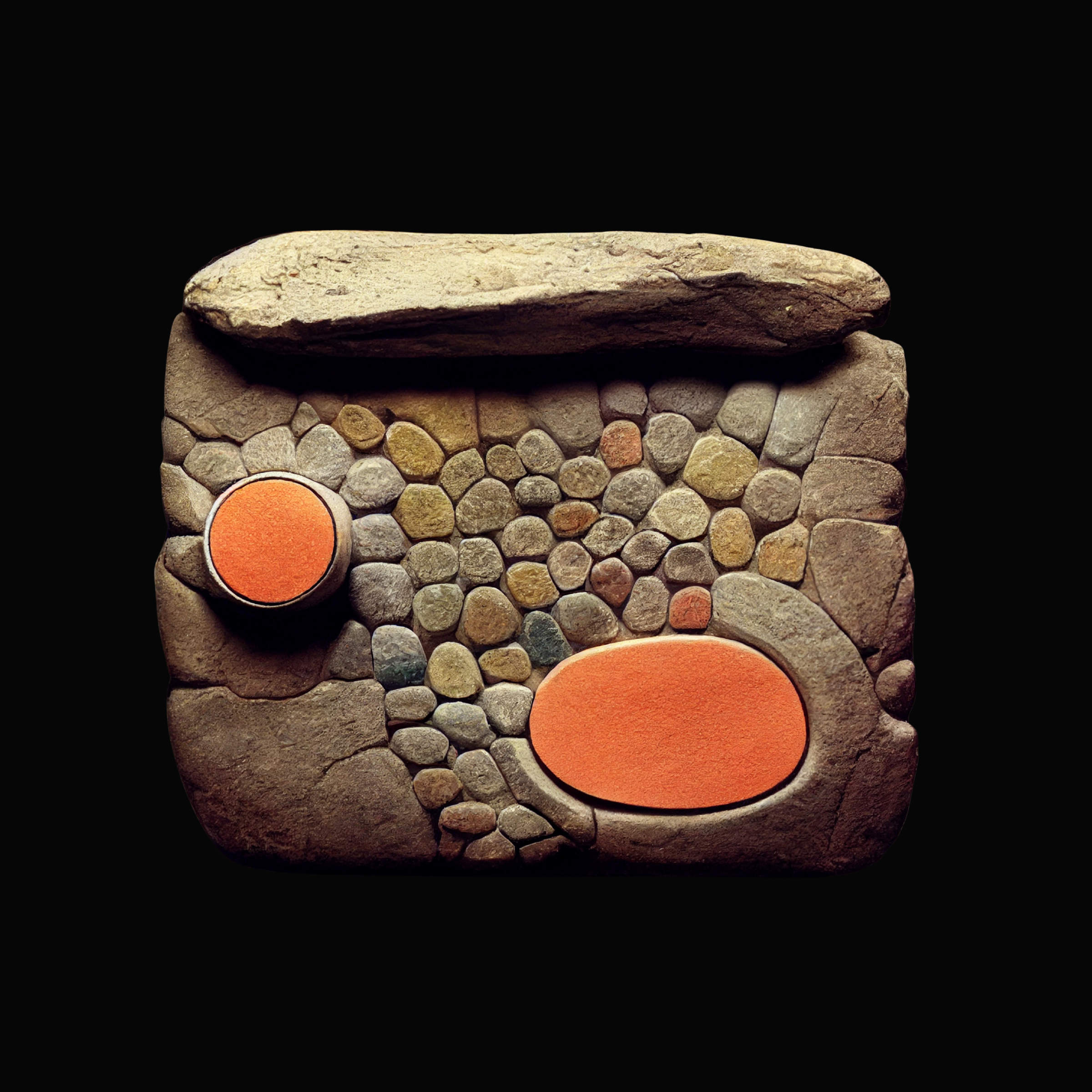MAX KUWERTZ
Looking at rocks, we have always faced a primal material of Earth, and its potential. They are circumstantial components of the landscapes surrounding us, given by a higher force. Caves have preceded and inspired human efforts to build dwellings (architecture), while smaller rocks were quickly turned into tools of evolutionary relevance (like hand-axes), and bigger slates became carriers of information, like paintings, scriptures, or the first code of law.
As a non-human-made substance, rocks are a medium that has been there forever, and will last until forever. Throughout their geological time scale, they generally maintain the unique tactile qualities that we (humans), over thousands of generations, have become so intimately attuned to. Touching a rock means to establish a material, sensory and emotional connection between the earthly body and one’s own form. Their surface texture, temperature, density and weight summons a sense of comfort, reassurance and realness, in a way that plastics or alloys generally do not.
In this design exploration Max Kuwertz imagines a fusion of hi-tec components with sublime stone-age primitives, evoking an affect of ambient computation. Augmented or integrated elements like camera lenses, manual buttons, sliders, displays, lights and speaker cones indicate scales that range from palm-sized to furniture. They are visions of a techno-pastoral domestic paradigm that feels archaic and future, in the way how it facilitates ancient physical sensations and digital output alike. As a speculative design language, Advanced Primitives signals endurance throughout long timescales and hazardous environmental conditions, while emphasising an embodied, sensory user experience.
As a non-human-made substance, rocks are a medium that has been there forever, and will last until forever. Throughout their geological time scale, they generally maintain the unique tactile qualities that we (humans), over thousands of generations, have become so intimately attuned to. Touching a rock means to establish a material, sensory and emotional connection between the earthly body and one’s own form. Their surface texture, temperature, density and weight summons a sense of comfort, reassurance and realness, in a way that plastics or alloys generally do not.
In this design exploration Max Kuwertz imagines a fusion of hi-tec components with sublime stone-age primitives, evoking an affect of ambient computation. Augmented or integrated elements like camera lenses, manual buttons, sliders, displays, lights and speaker cones indicate scales that range from palm-sized to furniture. They are visions of a techno-pastoral domestic paradigm that feels archaic and future, in the way how it facilitates ancient physical sensations and digital output alike. As a speculative design language, Advanced Primitives signals endurance throughout long timescales and hazardous environmental conditions, while emphasising an embodied, sensory user experience.




























AUTHOR
Max Kuwertz is a designer and art director with an interest in DIY aesthetics and artificial intelligence. He is the co-founder of 1×1 Systems and runs RAM, a Berlin-based design practice, working on the intersection of music, art and technology.
Utopian Thinking in the dark times – Season 2: Autumn/Winter 2022 – Research Capsule by Neo-Metabolism – Editors: Georgia Kareola, Lynn Gommes, Oskar Johanson – Contributors: Damian Borovsky, Olly Bromham, Camila Chebez, Shreya De Souza, Torben Koerschkes, Max Kuwertz, Christopher Michael, Liminal Vision, Zach Whitworth, Rue Yi – Paintings: Eric L. Chen – Design: Clint Soren, dolor~puritan, Ghikhan – Published: October 2022

